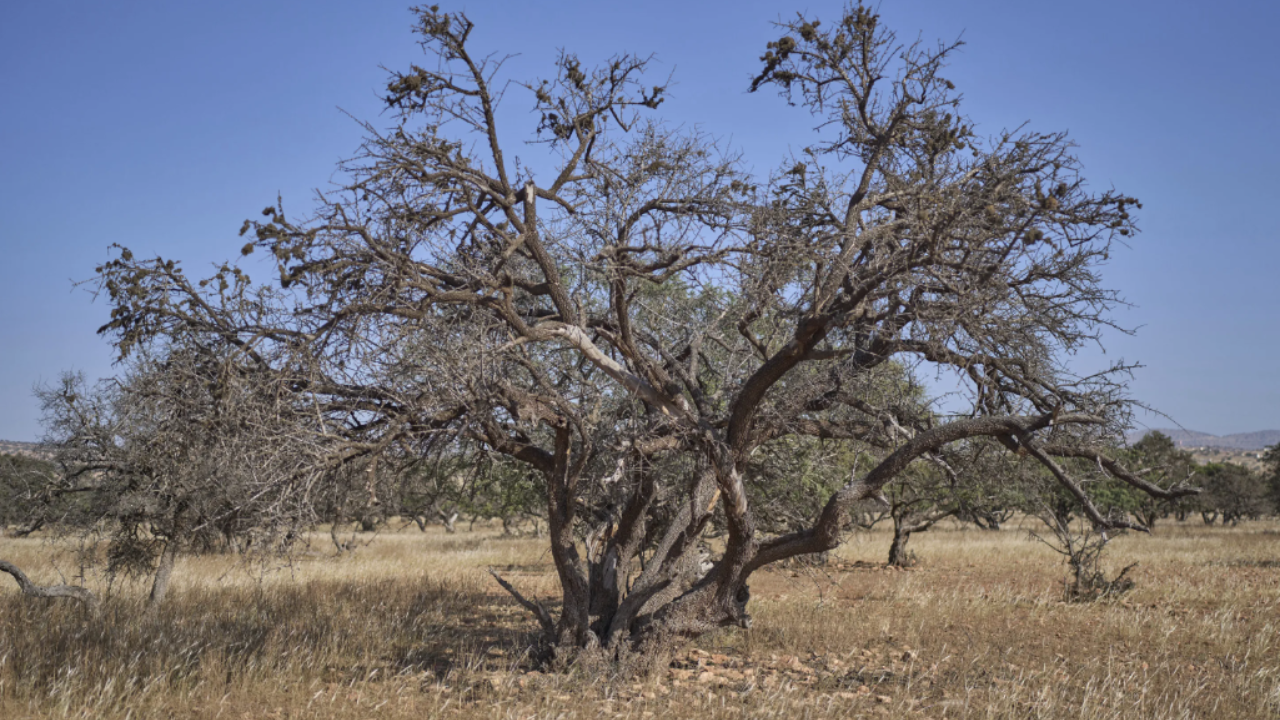
©(AP Photo/Mosa’ab Elshamy)
Vocabulary:
I will read the words, meanings, and sample sentences. Then, repeat after me.
- cosmetic /koz-MET-ik/
- conversion /kuhn-VUR-zhuhn/
- degradation /deg-ruh-DEY-shuhn/
- biodiversity /bahy-oh-di-VUR-si-tee/
- caper /KEY-per/
[noun] – a product used on the face or body to improve appearance
Many shops sell natural cosmetics made from fruit and herbs.
[noun] – the act of changing something into a different form or use
The conversion of old buildings into hotels is popular in big cities.
[noun] – the process of becoming worse in quality or condition
Soil degradation makes it hard for farmers to grow crops.
[noun] – the variety of plant and animal life in a particular area
Pollution in the river is harming the biodiversity of fish and plants.
[noun] – a small flower bud used as food, often for flavoring
The salad had olives, tomatoes, and capers for extra flavor.
Article reading:
Please read the whole article. Then, I will check your pronunciation and intonation.
In Morocco, the production of argan oil has expanded from a regional practice to a valuable global industry while still serving essential purposes in local communities. The oil, long used in Moroccan cuisine and traditional medicine, is now widely included in luxury cosmetics across the world. Most production takes place in rural areas near Essaouira, where women grind argan kernels by hand. Each kilogram of oil takes nearly two days to produce and sells for about $3 locally. However, as global demand increases, the argan forests—once covering over 14,000 square kilometers—have decreased by 40 percent. Experts have stated that climate change, overharvesting, and land conversion for export crops are key factors in this environmental degradation, affecting biodiversity and rural livelihoods.
In response, the Moroccan government launched a conservation project in 2018 to expand forest cover. One part of the plan involves growing argan trees together with capers to help save water and improve the soil. However, extreme drought has delayed fruit growth from new trees. At the same time, supply chain issues force many cooperatives to sell oil cheaply to intermediaries, who then sell it to global brands at higher prices. Experts have noted an economic disparity between producers and exporters. Multinational companies now control much of the market, raising fears of local displacement. Although storage centers have been introduced to improve bargaining power, many cooperatives report limited success. A redesigned support program is planned for 2026 to improve access and promote economic sustainability for producers in affected regions.
In response, the Moroccan government launched a conservation project in 2018 to expand forest cover. One part of the plan involves growing argan trees together with capers to help save water and improve the soil. However, extreme drought has delayed fruit growth from new trees. At the same time, supply chain issues force many cooperatives to sell oil cheaply to intermediaries, who then sell it to global brands at higher prices. Experts have noted an economic disparity between producers and exporters. Multinational companies now control much of the market, raising fears of local displacement. Although storage centers have been introduced to improve bargaining power, many cooperatives report limited success. A redesigned support program is planned for 2026 to improve access and promote economic sustainability for producers in affected regions.
Discussion Questions:
I will read each question. Then, please answer them.
- Have you ever used a product that contains natural oil, like argan oil? If so, what was it, and how did you use it? If not, would you like to try one? Why or why not?
- Have you ever learned about how a product is made by hand? If so, what did you learn, and was it interesting? If not, what kind of handmade product would you like to learn about, and why?
- Do you agree that protecting nature is more important than increasing production?
- How can global companies help support the women who make argan oil?
- What are some ways to balance economic growth and environmental protection?
Summarization
Please summarize the whole article using your own words and expressions. You will have one minute to prepare before you answer.
Describe:
Please explain the definition of each word listed below based on your understanding. You can provide example sentences if needed.
- essential
- luxury
- produce
- climate change
- overharvesting